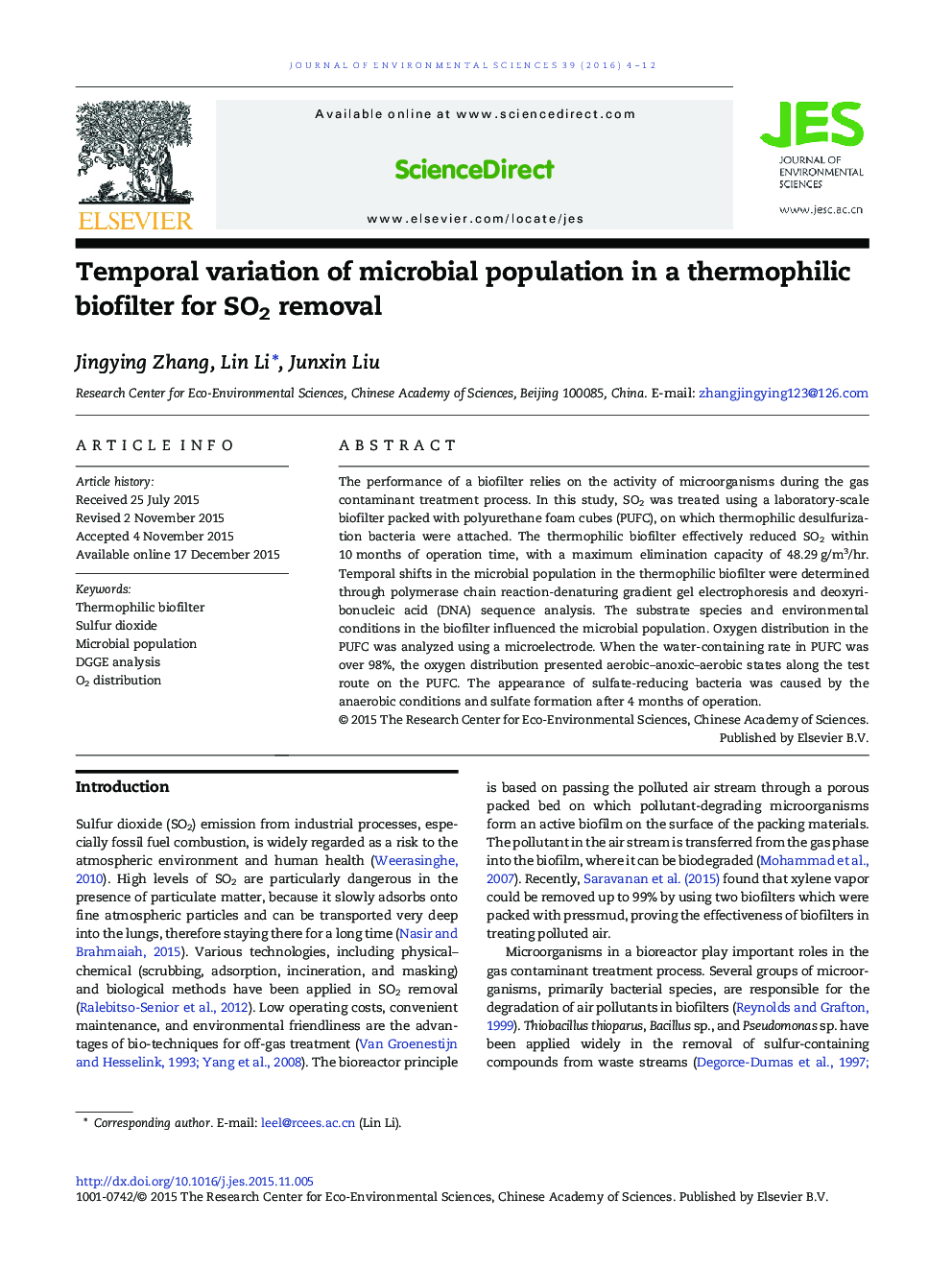| Article ID | Journal | Published Year | Pages | File Type |
|---|---|---|---|---|
| 4453863 | Journal of Environmental Sciences | 2016 | 9 Pages |
The performance of a biofilter relies on the activity of microorganisms during the gas contaminant treatment process. In this study, SO2 was treated using a laboratory-scale biofilter packed with polyurethane foam cubes (PUFC), on which thermophilic desulfurization bacteria were attached. The thermophilic biofilter effectively reduced SO2 within 10 months of operation time, with a maximum elimination capacity of 48.29 g/m3/hr. Temporal shifts in the microbial population in the thermophilic biofilter were determined through polymerase chain reaction-denaturing gradient gel electrophoresis and deoxyribonucleic acid (DNA) sequence analysis. The substrate species and environmental conditions in the biofilter influenced the microbial population. Oxygen distribution in the PUFC was analyzed using a microelectrode. When the water-containing rate in PUFC was over 98%, the oxygen distribution presented aerobic–anoxic–aerobic states along the test route on the PUFC. The appearance of sulfate-reducing bacteria was caused by the anaerobic conditions and sulfate formation after 4 months of operation.
Graphical AbstractFigure optionsDownload full-size imageDownload as PowerPoint slide
